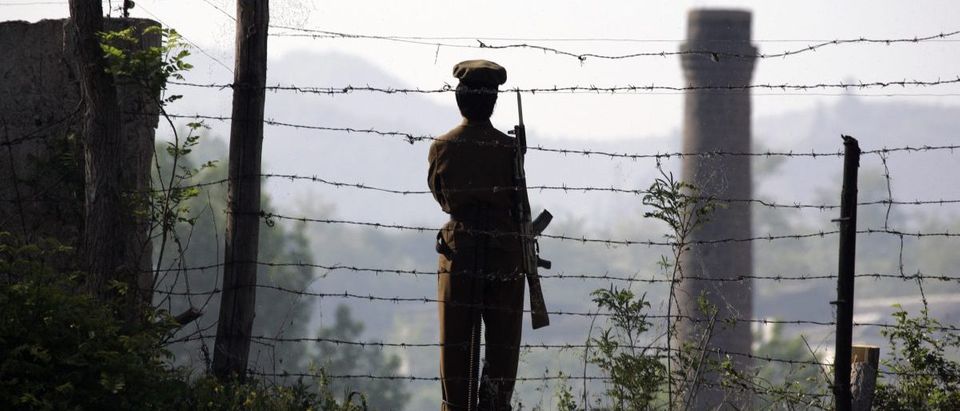North Korea obtains significant funding for its ballistic missile and nuclear weapons programs from exports of slave labor overseas.
A rather unusual Associated Press report explaining how fish produced in China and sold in the U.S. may be generating economic support for North Korea’s weapons programs offered rare insight into North Korean slavery.
At Chinese factories, North Korean workers aren’t allowed to leave their compounds without permission, and must step from housing to factories in pairs or groups, with North Korean minders. They receive a fraction of their salaries, while the rest — as much as 70 percent — is taken by the North Korean leader Kim Jong Un’s government.
North Korean workers make clothing and numerous other products in Chinese factories.
The Department of State drew attention to North Korea’s forced labor practices in a report earlier this year. “Many North Korean laborers sent by the government to work abroad under bilateral contracts with foreign governments also face conditions of forced labor … The majority work in Russia and China, but Middle Eastern, African, and other European and Asian countries also host North Korean laborers,” the report explained.
Many North Koreans working under these contracts are subjected to conditions indicative of forced labor, such as working excessively long hours in hazardous temperatures with restricted pay. North Korean government “minders” restrict and monitor their movement and communications. These workers face threats of government reprisals against them or their relatives in the [North Korea] if they attempt to escape or complain to outside parties. Workers’ salaries are appropriated and deposited into accounts controlled by the North Korean government. Workers receive only a fraction of the money paid to the North Korean government for their work and face punishment if they fail to meet production or work targets.
The exact number of North Korean laborers abroad is unknown, but estimates are in the tens of thousands. Some estimates for the total number of “guest workers” are as high as 100,000.
The practice of using overseas workers to generate funds for the regime began in the 1990s, when an economic collapse and subsequent famine put significant strain on the already impoverished country. These workers have toiled in Chinese sweatshops, Malaysian mines, and Qatari construction sites. North Korean slave labor was reportedly used in Russia to build stadiums in Russia.
“This is a state-sponsored scheme to export folks who are in bonded labor,” Luis CdeBaca, former U.S. ambassador for human trafficking issues, told the AP. “It’s supporting a repressive regime.”
The Trump administration, through its senior diplomats, has put pressure on other countries to stop using North Korean labor.
“Any country that hosts North Korean guest workers, provides any economic or military benefits, or fails to fully implement UN security council resolutions is aiding and abetting a dangerous regime,” Tillerson said in July after North Korea’s successful test of an intercontinental ballistic missile.
China ordered a stricter screening process for new visa issuance for North Korean workers while prohibiting visa extensions in mid-September. China has also ordered its financial institutions to stop doing business with North Koreans, and Beijing has demanded that North Korean companies and joint ventures shut down in the next few months.
Many North Koreans worked in the border town of Dandong. “Until early this year, more than 20,000 North Koreans worked in Dandong. But the number has decreased a lot after China toughened its sanctions,” a local source told Yonhap News Agency. “We can spot many North Korean workers at Dandong Station and the immigration office waiting to go home.”
Other countries are reportedly following suit as the U.S. ramps up its pressure campaign, but North Korean forced labor practices occur in country as well.
An estimated 400,000 North Korean workers toil in forced labor situations inside the rogue regime, according to Open North Korea, a South Korea-based non-governmental organization. This class of worker, known in country as “dolgyeokdae,” provide labor worth roughly $1 billion each year, but these workers do not receive pay for their contributions. If they do receive payment for their services, it is next to nothing.
Send tips to ryan@
All content created by the Daily Caller News Foundation, an independent and nonpartisan newswire service, is available without charge to any legitimate news publisher that can provide a large audience. All republished articles must include our logo, our reporter’s byline and their DCNF affiliation. For any questions about our guidelines or partnering with us, please contact licensing@dailycallernewsfoundation.org.


